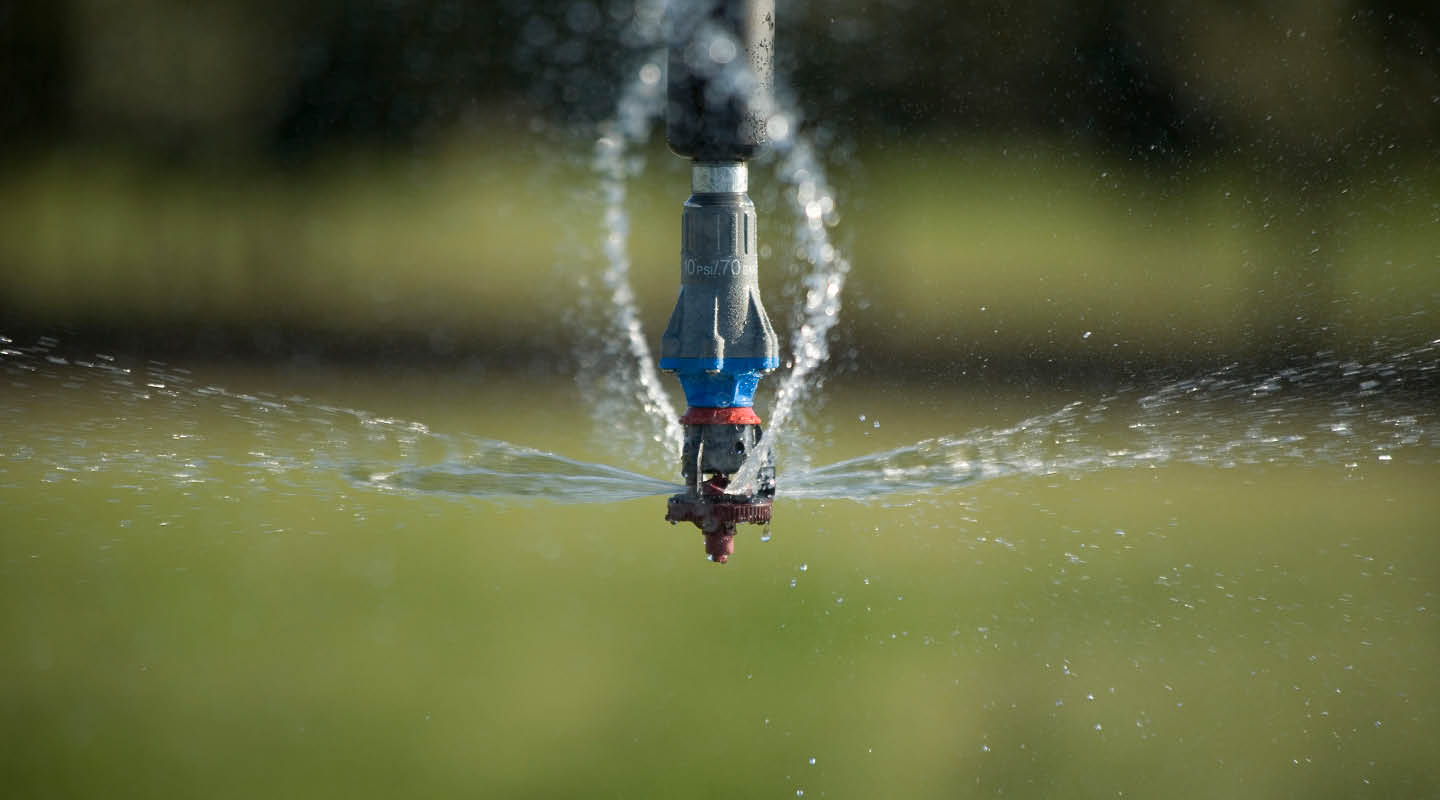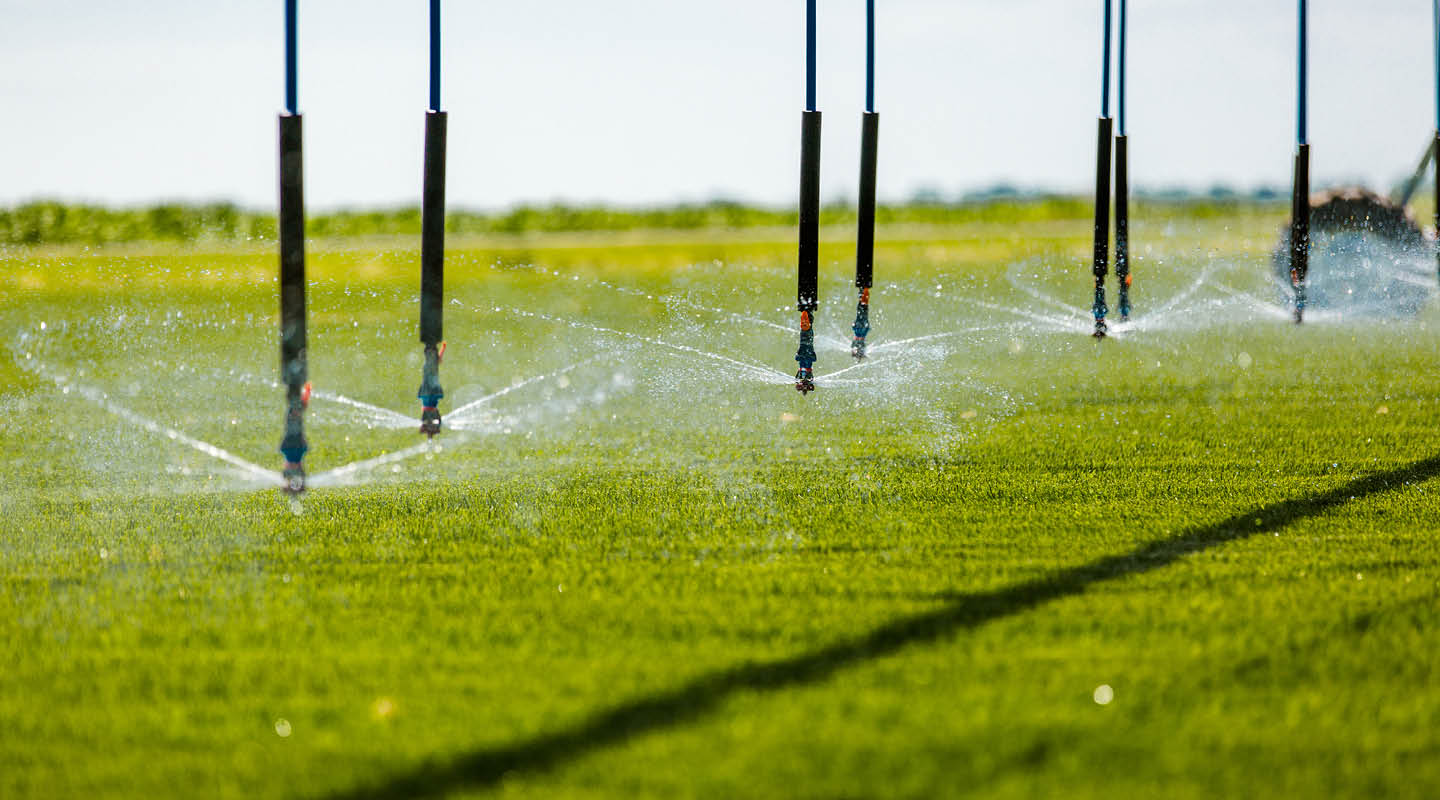Ongoing design changes in center pivot irrigation sprinklers have made it possible for today’s growers to do more with less water. When you are selecting a sprinkler for your pivot or linear irrigation, always take the soil type, terrain, climate and crop into consideration
Of course, there are many factors in addition to crop, soil, terrain and weather that affect the best choice of sprinklers for your operation. Maybe your existing sprinkler package should be evaluated and even upgraded. Here are five points about irrigation sprinklers to consider:
 Changes in technology have resulted in sprinklers that operate with lower pressure, saving energy while delivering excellent uniformity.
Changes in technology have resulted in sprinklers that operate with lower pressure, saving energy while delivering excellent uniformity.
1. Close Counts in Horseshoes – and in Sprinklers.
Spacing your sprinklers too close can have diminishing returns, but more often they are too far apart. Generally, the uniformity of a sprinkler package will increase as the irrigation sprinklers are spaced closer together (within the manufacturer’s guidelines).
2. Your Sprinklers Might Be Wasting Energy.
Energy costs are going up. If you’re using high-pressure sprinklers or operating above the design pressure of your sprinkler package, it’s time to think about upgrading. In most cases, excessive pressure wastes energy (and your money). Modern, low-pressure sprinklers offer high performance even with lower pressure.
3. Sprinkler Packages Wear Out Over Time.
Irrigation sprinkler wear and tear isn’t always visible to the naked eye, but it’s still there. When tolerances of nozzles and regulators start to open up, the water distribution uniformity of the machine decreases. The plates and moving components no longer perform at optimal levels. In terms of irrigation sprinkler life expectancy, on average, we advise 10 years or 10,000 hours.
 Sprinkler wear is not always easy to see, but checking your sprinklers at 10 years or 10,000 hours is a good rule of thumb.
Sprinkler wear is not always easy to see, but checking your sprinklers at 10 years or 10,000 hours is a good rule of thumb.
4. Runoff and Ponding Are Big Issues – and Avoidable.
If you need to speed up the machine to avoid runoff and ponding, you’re probably not applying the correct amount of water based on your irrigation schedulingrequirements. Choosing a flow rate that is adequate but not excessive is the first step. The next step is to select the right sprinkler package for your soil, crop and climate.
5. Pressure Regulators Improve Performance.
Pressure regulators ensure a constant, ideal pressure is supplied to the sprinkler nozzle and the plate, as long as you provide +5 PSI of the pressure rating. This leads to predictable and consistent performance, especially with varying water supply pressures and terrain. Operating at the ideal pressure can improve the sprinkler’s water application efficiency.
You invest a lot in your farm, and in your irrigation machines the sprinklers are attached to – don’t forget about the importance of the sprinklers themselves!
For more information on irrigation sprinklers and the precise type for your operation, contact your local Valley dealer.